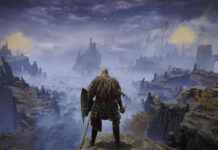A police raid at Stonewall Bar, located in New York’s Greenwich Village neighborhood, occurred on June 28, 1969. This would lead to a series spontaneous protests by the LGTBI community, against a system that oppressed and persecuted homosexuals, with the blessing of the US government. These incidents are believed to have sparked the International Pride Day celebration to celebrate pride and belonging to a group that was historically marginalized, rejected, and repressed due to their sex-affective orientation, sexual identity, or gender roles.
Since long before the street riots, literature has been an ally for the cause. It is because the books showed, even timidly, homosexual characters before any other artistic discipline. People who need to know the answers to their questions, or find a way to escape from a cruel reality, books have become a lifeline. Rosa Montero said it all: “What would I do without books?” They are the best refuge in pain, anxiety, waiting, and despair.
Safo and Walt Whitman, Virginia Wolf, Federico Garcia Lorca, Oscar Wilde, and Virginia Wolf are just some of the writers who captured the joys, fears, and challenges of homosexual, bisexual, or transsexual groups with their classic pen strokes. Not always in a clear, concise or direct way. But, they do so in subtle ways and between the lines in order to avoid censorship and not raise suspicions in the public’s mind. Today, LGTBI literature has become more accessible and the stories of people who were previously invisible and silenced are now being heard.
This is evident in the book “Heartstopper” by Alice Oseman published by Cross Books. It stars Charlie Spring (a gay boy) and Nick Nelson (a bisexual girl). They have a wonderful love story that’s like any other teenage love story. The universe is complete with a number of charming characters that orbit around the main couple. They give visibility to other sexual orientations and gender identities, such as Elle, a transgirl, or Tara and Darcy, who are lesbians. This graphic novel series has enjoyed such a huge success that Netflix launched the audiovisual version of the graphic novel a few months ago to a rousing reception from critics and the audience.
Before the media sensation ‘Heartstopper,’ there were other novels such as ‘Call Me by Your Name’, written by Alexandria Andre Aciman, who was also a writer. This novel, which was published by Alfaguara publishing, showed us Oliver and Elio. Two young lovers embark on a journey through the darkest depths of their feelings and eroticism, in a small coastal town in Italy. A story about a teenage love story and a young student at university that was made it to the big screen. This film, along with the books that followed, makes up an ever-expanding, diverse, and inclusive literary imaginary.
The plot
The provisional camp near Calais, France is called the “Jungla de Calais”. It was built after the 2015 European migration crisis. This humanitarian situation was one of the most difficult for the continent since World War II. World. Alejandro Simon Partal, the poet, places “La Parcel”, his first novel published in Caballo de Troya. In it, a Spanish professor (whose name is not known) accidentally meets Nizar, a Syrian refugee. They share a complicated sexual and sentimental relationship that emphasizes the need for both to be at peace with one another and the world. Simon Partal’s prose is rich in lyricism, crudeness, and shows the reader an emotional journey in which family, social status and sexual orientation all go hand in hand in a bitter, constantly changing environment.
The distance runner
In 1974, when Patricia Nell Warren published ‘The long distance runner’ (a novel by Editorial Egales that was translated by MontserratTrivino), sports and homosexuality were taboo subjects. However, this has changed recently with many athletes coming out of their closets. American journalist, writer and LGBTI activist Harlan Brown introduces us to Billy Sive, a young gay athletics coach at a small North American university, who is trying to escape his past and Billy Sive who doesn’t care whether his sexuality is public. They will fight against all odds to live out their love and start a race against prejudice, misunderstanding and miscommunication that will take them to the Montreal Olympic Games. It will be an exciting but tragic ending. Warren’s prose is fluid and exudes great sensuality, which allows the reader to experience a romantic novel with an exquisite style that captures and envelopes.
People like me
John Irving’s novel, “Personas como yo”, published by Tusquets Editores, and translated by Carlos Milla Soler is a fascinating exploration of desire and sexual identity that has an autobiographical twist. He introduces us the character of William Abbot. Abbot recounts his childhood experiences and conflicts with love and heartbreak. All of this is told through the prism of intolerance that was prevalent in the fifties and twenties of the twentieth century. At the age of 13, the protagonist’s life is transformed when he is surprised by his stepfather and the librarian. He wonders if it is possible for him to like Miss Frost and the most rogue boy from the class at the same moment. The American writer makes a quick, rhythmic, and ironic argument in “People like me” about the importance of personal identity, and the validity of bisexuality, as another orientation within the wide spectrum of sexuality.
Us | Sara Soler
Sara Soler published a fanzine in 2019 about her partner’s transition. ‘Us’ became a graphic novel published in Astiberri Ediciones. The illustrations are in light blue and pink to honor the trans flag colors. She tells Diana how they faced the transition together. The Aragonese illustrator and author also aims to make trans reality more visible. She will share her perspective in the face misinformation, ignorance, and misunderstandings. With a pinch of acid and tender humor, she triumphs over all. The book ‘Us’ will be a work that encourages personal growth. It is clear that the protagonists must come out of the closet to face the hostile gaze of their families and social environment. This will open the door for others who are in similar situations as Diana. .
Swim in the dark
Tomasz Jedrowski sets us in communist Poland in the 1980s. He takes us on a journey to initiate to a summer farm camp in “Swimming in the Dark”, a critically-acclaimed novel published in Dos Bigotes with a translation of Bruno Alvarez & Jose Montserrat. He introduces us to Ludwik (a nonconformist student who is about to complete university) and Janusz (a carefree, attractive boy). The river is a good place to meet the spark that makes them jump. However, their completely different worlds and ideologies will put their love through its paces in a homophobic society at the brink of collapse. Jedrowski’s story is attractive and agile, which makes ‘Swim In the Dark’ an addictive read. The author’s highly poetic descriptions of Jedrowski instantly place the reader in the story. Love, politics and communism combine to make this novel a powerful, heartbreaking, and memorable debut.
The Song of Achilles
Madeline Miller could be called the tenth muse. Her reimaginings of classical mythology have brought Greco Roman culture closer to a wider audience, who eagerly await her new books. The Song of Aquiles, a book published by AdN Alianza de Novelas with translation by Jose Miguel Pallares by the American novelist and professor, takes us to Greece of heroes. It introduces us Patroclus, a young prince, who is repudiated by his father and exiled to Phthia, where he is received by King Peleus, his son Achilles, and other royals. He protects the prince and makes him his friend in arms. This friendship will lead to one of the most romantic love stories ever written. Miller’s sensual lyricism combined with Homeric prose makes it easy to see the fear and love of two men in an epic battle of antiquity.
Maurice | E.M. Forster
E. M. Forster wrote Maurice’ in 1914. It was published by Alianza Editorial. The translations were done by Jose Manuel Alvarez Florez Florez Florez and Angela Perez Gomez. For fear of uproar, he refused to print it while he was still alive. It was published in 1971 and quickly became a landmark posthumous work that is considered one of the greats of LGTBI literature. The story’s protagonist Maurice is a young Londoner who comes from a wealthy family. He narrates his sexual awakening, and the discovery of love, in a hostile, strict environment for same-sex relationships. The author’s ornate prose and lengthy descriptions can cause readers to feel overwhelmed by the literary pace that is so rare today. But, “Maurice” is a novel about initiation that shocked the literary world and should be read.
Carol | Patricia Highsmith
Patricia Highsmith, who wrote “Carol” (edited and translated by Anagrama and Isabel Nunez and Jose Aguirre in 1952), did so under a pseudonym to avoid being categorized as a lesbian author. It became a bestseller, and it was republished decades later with the author’s name on its cover and the title she had chosen for the novel. Highsmith is known for her dark characters, disturbing works and introduces us to Therese. She works in a department shop and meets Carol, an elegant and sophisticated woman who wants to purchase a doll for her daughter. Their lives will be forever changed by the chance encounter between these two people. Patricia’s story telling style is captivating and engaging. Her books are addictive and grab you. “Carol” was a landmark in LGTBI literature because it featured two lesbians as main characters and did not end with a tragic ending.
ladybug
Federico Garcia Lorca said that the ladybugs of South sing on the rooftops, just as Federico Garcia Lorca. Juan Naranjo, the writer, climbs to the top of Torremolinos’ highest roof to share his story, ‘Mariquita,’ Roca Editorial’. It is a story about growth and learning that allows us to examine the effects of gender diversity, family relationships, homophobia, and other social issues. Naranjo shares his childhood and adolescence with us, along with his hopes and dreams, as well as his fears and insecurities, on a journey that takes us from the eighties to two thousand. This is accompanied by tender watercolors by the author, which will make it easy for us to laugh and cry at the same time. This ‘Ladybug’ has soared very high.
Esplendor | Margaret Mazzantini
“Esplendor” by Margaret Mazzantini was edited by Seix Baral and translated by Isabel Gonzalez Gallarza. It is one of those novels that you remember for a long time. They become part of your “portus quietis”, and you can turn to them when you are anxious. Italic author, Guido, sets the scene in Rome in the seventies. He introduces us to Constantino and Guido, two children who, despite sharing the same building’s elliptical landing, green and black rhomboid marmalades, live in very different worlds. . The first is from a wealthy family, while the second is from a doorman’s son. Mazzantini’s initiation novel is a combination of lyrical prose, rawness, and sweeping style. The reader will be able to witness the gay love story between the protagonists. This is a story that starts in childhood and ends in adulthood, facing shame, time, distance, people, and shame. As the title suggests, a story that shines a brilliant light.








